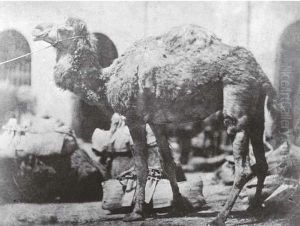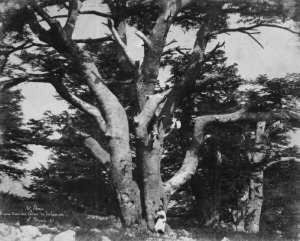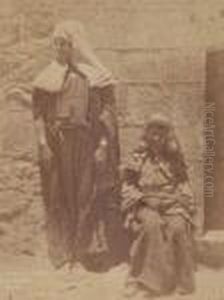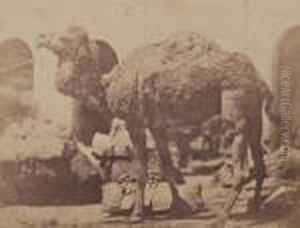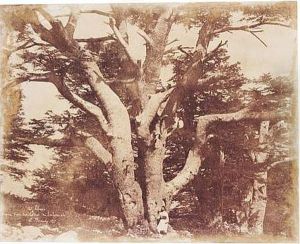Ernest Benecke Paintings
Ernest Benecke was not primarily known as an artist in the conventional sense, but rather as a photographer, banker, and traveler of German origin. Born on June 12, 1817, in Hamburg, Germany, Benecke is often remembered for his early contributions to the field of photography, particularly during the 1850s, a period when photography as an art and science was still in its infancy.
Benecke's work as a photographer is significant due to his interest in travel and landscape photography. During a time when travel was becoming more accessible, but still quite arduous, Benecke undertook several journeys that allowed him to capture images of landscapes, architecture, and people from different cultures. One of his notable journeys was his travel through Egypt and Nubia between 1851 and 1852. The photographs he took during this trip are some of the earliest photographic records of the region's people and ancient monuments.
His works from the trip to Egypt and Nubia were later exhibited and gained attention for their historical value and the quality of the images. These photographs not only served as a record of the places he visited but also contributed to the West's understanding and appreciation of these ancient civilizations at a time when Egyptology was becoming increasingly popular in Europe.
Beyond his photographic endeavors, Ernest Benecke was a successful banker, which was his primary profession. His financial acumen likely afforded him the resources and leisure to pursue photography and travel. Despite his success in banking, it is his role in the early days of photography that has left a lasting legacy.
Ernest Benecke died on January 11, 1894, in Germany. Although not as widely known today as some of his contemporaries, his work remains an important part of the history of photography, particularly in the context of travel photography and the visual documentation of the 19th century.
